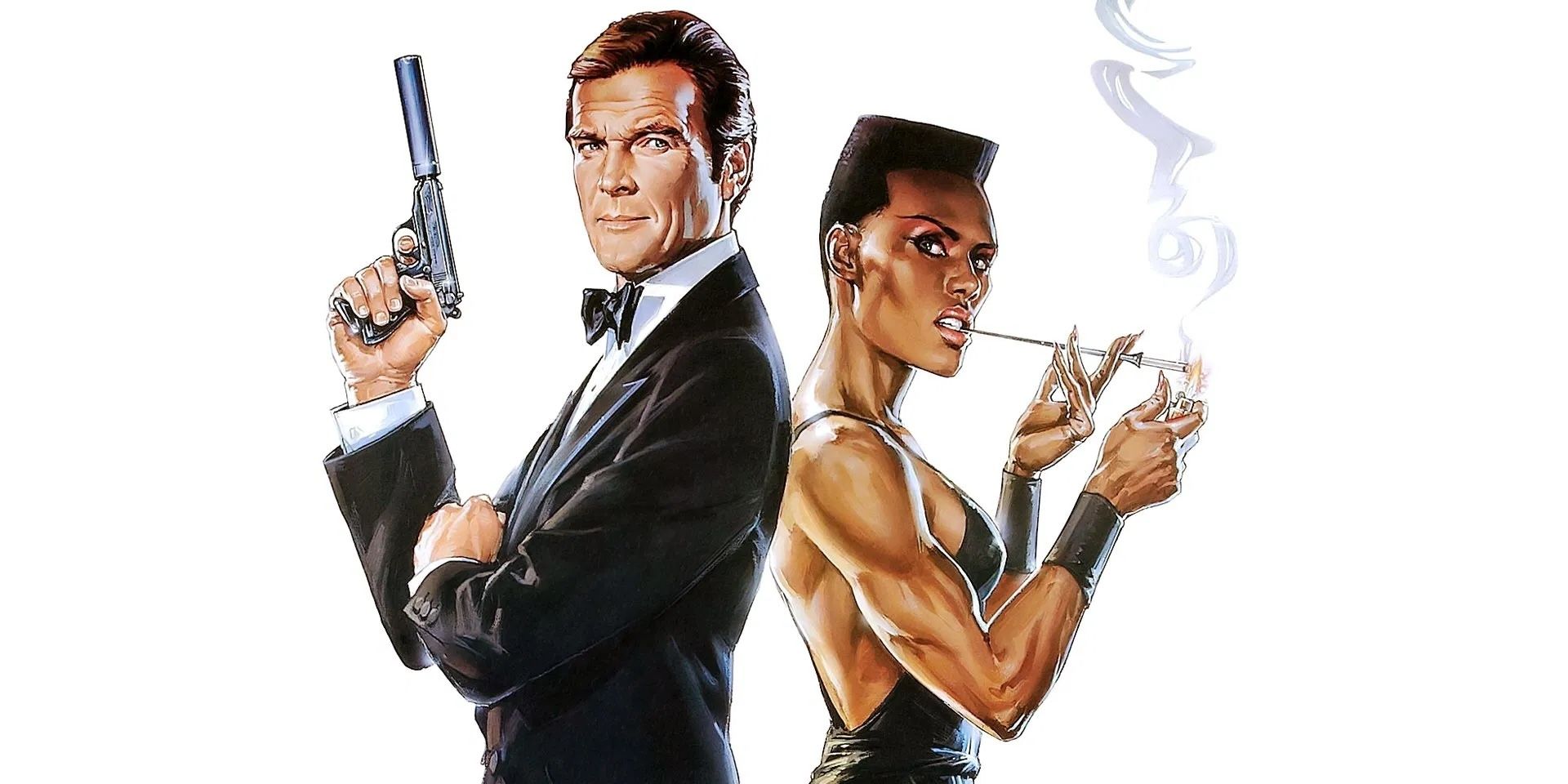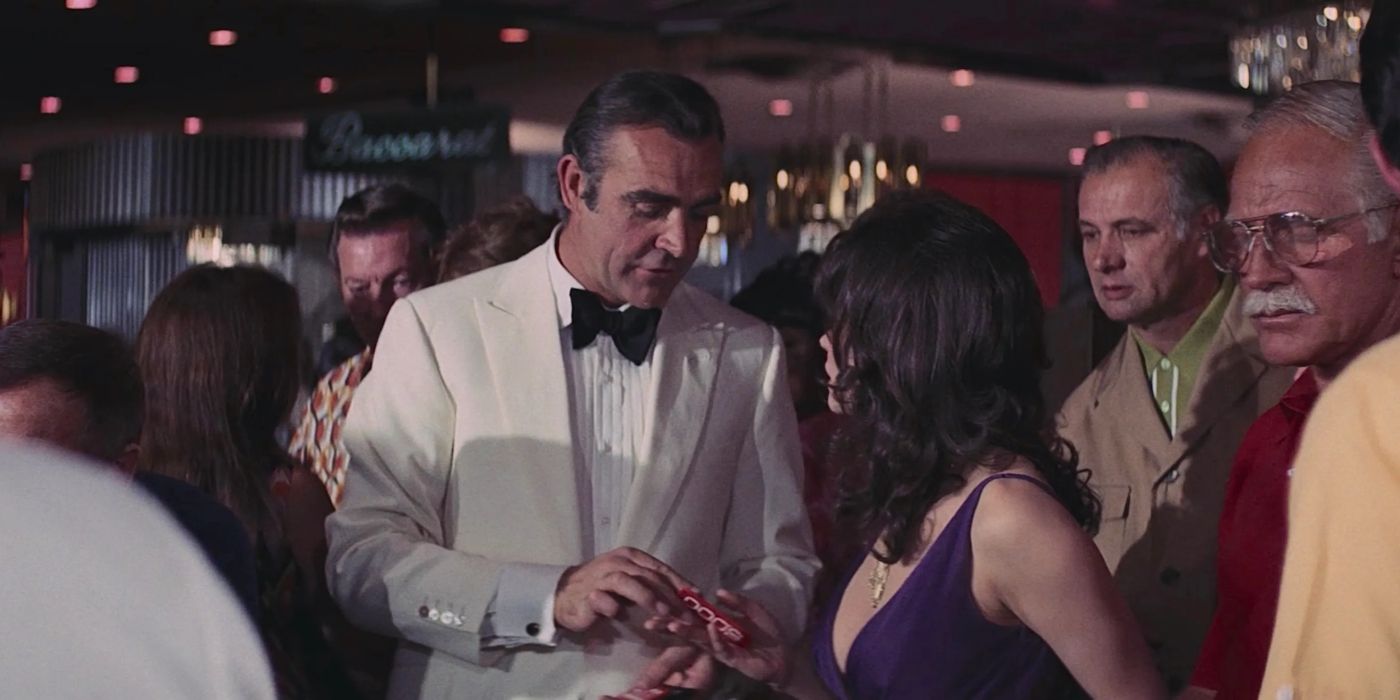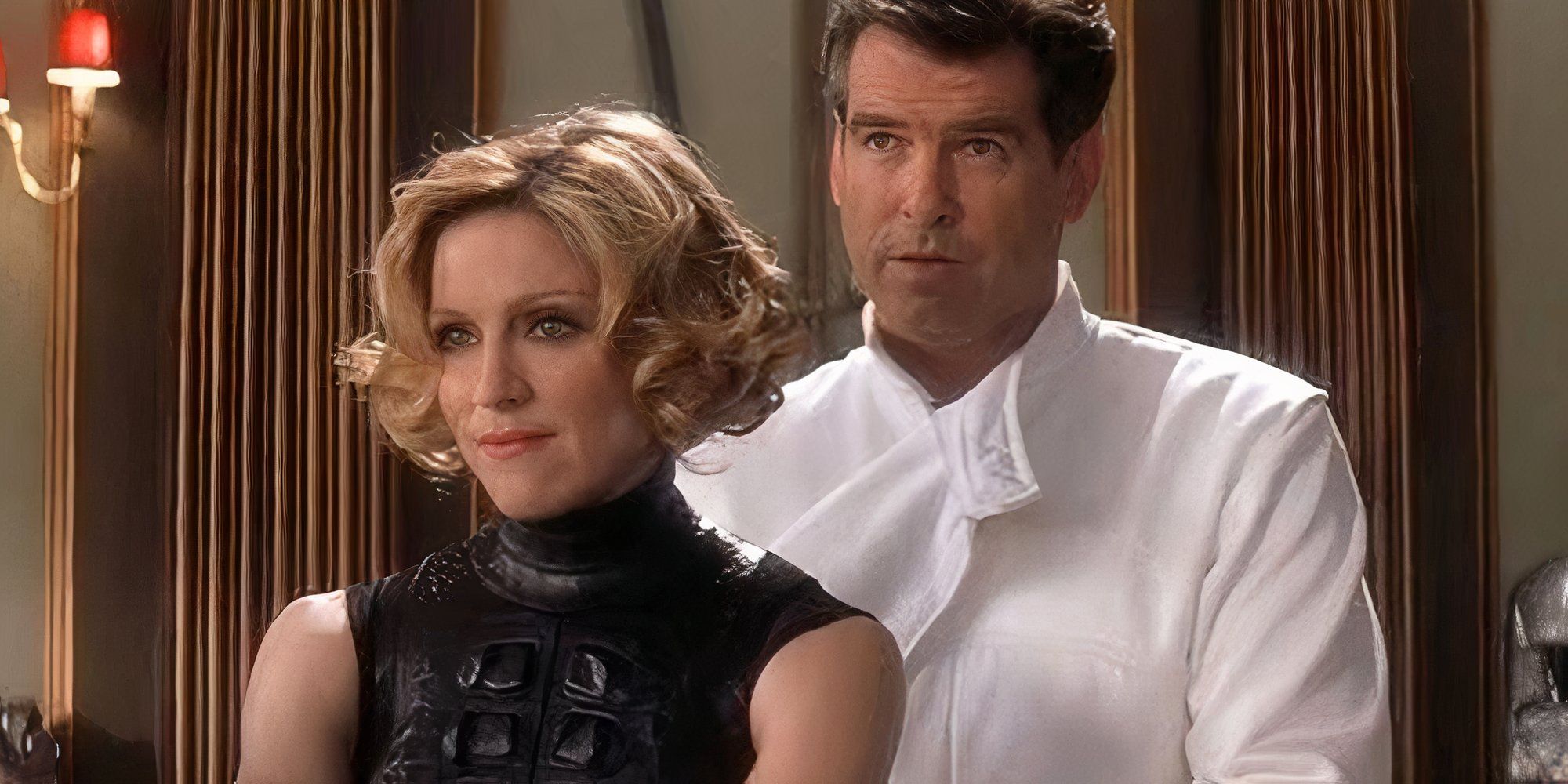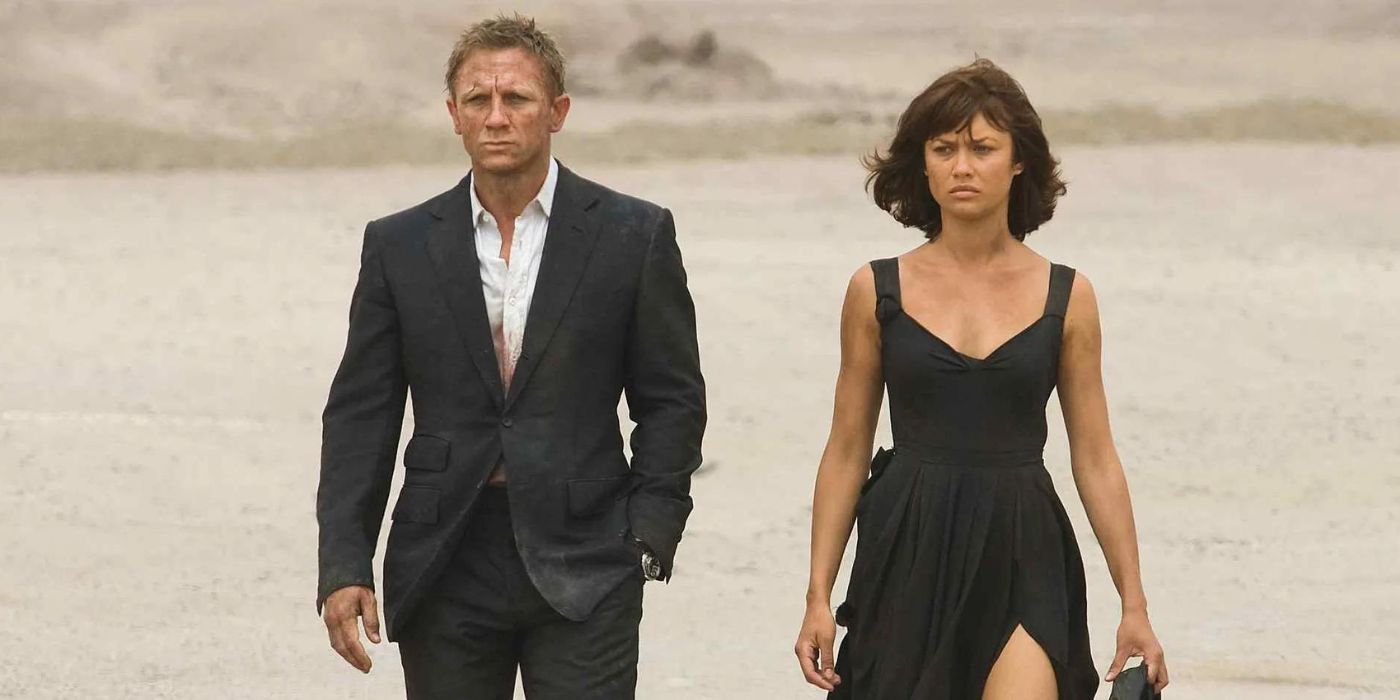The James Bond franchise is remarkably consistent, as there are few entries in the series that could be described as being “unwatchable.” While not every Bond film reaches the level of excellence of Casino Royale or Goldfinger, the franchise has surprisingly never managed to have a complete disaster like The Rise of Skywalker in the Star Wars series, Batman & Robin for the DC adaptations, or Halloween: Resurrection in the Halloween franchise. However, there are generally dips in quality within each run of Bond films, as the series has to continuously update itself to remain fresh. Each actor cast as Bond has had at least one film that doesn’t represent their best work.
George Lazenby is perhaps the only Bond actor who has a spotless track record, as he only ever starred in one 007 film, On Her Majesty’s Secret Service, which is considered to be a masterpiece. The fluctuations in quality is part of the reason that the Bond franchise has remained so enjoyable after so much time, even if there are still some films that fans will want to skip out on when they are rewatching the entire series. Even if it will be exciting to see who plays Bond next, there is no guarantee that every single film under Amazon and MGM will be excellent. Here are the worst Bond movies from every actor.
5
‘Diamonds Are Forever’ (1971)
Starring Sean Connery
Diamonds Are Forever was Sean Connery’s return to the Bond franchise, as despite having retired from the role after You Only Live Twice, he decided to rejoin the series after the backlash to On Her Majesty’s Secret Service. While it was clearly intended to be a return to a more “classical” Bond, which didn’t feature some of the darker components that had made On Her Majesty’s Secret Service so subversive, Diamonds Are Forever ended up feeling very repetitive, and featured some of Bond’s worst romantic relationships. Although it’s not fair to criticize many of the Bond films for their depiction of gender roles, as they have to be viewed in context, the regressive treatment of women in Diamonds Are Forever felt gross and sexist, even back in 1971.
Diamonds Are Forever felt like it disrupted the natural flow of the series, as You Only Live Twice had offered a satisfying conclusion to Connery’s arc as Bond, as it concluded with the devastation of a SPECTRE base in Japan. Diamonds Are Forever could have been used to introduce a new threat, but instead, it regressed to featuring another SPECTRE conspiracy that undercut the stakes of the previous films. Diamonds Are Forever also failed to address Connery’s advancing age; at least when Connery returned for the non-EON film Never Say Never Again in 1983, Irvin Kershner’s film addressed that he was an older, grizzled character.
4
‘A View To A Kill’ (1985)
Starring Roger Moore
A View To A Kill was the last Bond film that Roger Moore starred in, and proved that he had more than overstayed his welcome as the character. Although some felt that Moore’s more comedic approach to the character did not respect the darker tone of Ian Fleming’s source material, it’s easy to forget that he appeared in Live & Let Die and The Spy Who Loved Me, which are two of the most grounded and intense films in the entire franchise. However, Moore’s films gradually went sillier as they went along, and A View To A Kill basically felt like a farce that wouldn’t feel out of place within the Austin Powers franchise.
The best part of A View To A Kill is Christopher Walken, who replaced David Bowie to play the obsessive villain Max Zorin, who planned to destroy the American economy by launching an attack on Silicon Valley. While Walken seemed to understand that chewing the scenery was the best way to make the film entertaining, the action is rather underwhelming, and the film goes for long stretches without Bond doing any spycraft. There isn’t necessarily anything wrong with an older actor playing Bond, as the character’s age has always been somewhat ambiguous, but Moore was 57 at the time A View To A Kill was released, and no longer felt like a believable 007.
3
‘The Living Daylights’ (1987)
Starring Timothy Dalton
The Living Daylights was the first Bond film that starred Timothy Dalton, who sadly only got to appear in two entries in the series before the franchise took an unprecedented six year hiatus. Given the brevity of his run, the fact that The Living Daylights is considered the “worst” of his films is only because Licence to Kill is a vastly superior installment that understood what made Dalton best to play a more novel-accurate version of the character. Dalton is a fairly intense actor who was able to reflect the more cynical, ruthless qualities that were present in Fleming’s source material, which put him in stark contrast to what Moore had done. Although the films weren’t as financially successful at the time, they were in many ways predecessors to what Casino Royale would become.
The Living Daylights can often feel like a film that was written with Moore in mind, as despite the fact that it has a more realistic villain and a grounded political perspective, it also has some of the goofier espionage shenanigans and cheeky humor that doesn’t entirely fit what Dalton brought to the character. License to Kill was much better because it told a straight up revenge story where Bond had his role in MI6 revoked, and was forced to strike out on his own with no assistance or gadgets to help him. Nonetheless, there’s a lot to like about The Living Daylights, including the great song by A-Ha and an early performance by Benicio del Toro.
2
‘Die Another Day’ (2002)
Starring Pierce Brosnan
Die Another Day was the last film that Pierce Brosnan appeared in as Bond, and effectively ruined his chance to make more installments in the series, even though it was relatively successful at the box office. Although Brosnan had started out in a pretty grounded place as Bond with GoldenEye, his films progressively got sillier, and Die Another Day completely jumped the shark by including plot points that felt straight out of science fiction. A strange plot twist involving the villain, played by Toby Stephens, is so bizarre that it may shock Bond fans to imagine that it actually happened in a mainstream film released in 2002.
Die Another Day betrays what makes Bond a cool character, as the gadgets and gimmicks end up taking more importance than his inherent charisma and intelligence. The overuse of CGI, which already didn’t look great in 2002, looks even worse now; the film also has a confusion of tone, as it somehow switches from a goofy scene of Bond surfing onto the coast of North Korea to a graphic torture scene that leads into the opening song. The only good thing to be said about Die Another Day is that both of the female characters, played by Halle Berry and Rosamund Pike, are quite well-written and performed.
1
‘Quantum of Solace’ (2008)
Starring Daniel Craig
Quantum of Solace is a film that is hard to judge within the arc of Daniel Craig’s Bond, as it suffered from serious production issues during the height of the writer’s strike. Although it was designed to be a darker sequel that saw Bond seeking revenge for the death of Vesper Lyn (Eva Green) during the end of Casino Royale, Quantum of Solace ended up being a convoluted mess that lacked the adventure and intrigue that one would expect from an installment in the series. While Mathieu Amalric is a great actor who has done excellent work with Steven Spielberg and Wes Anderson, his performance as Dominic Greene is one of the weakest villains in the entire series. The idea of a duplicitous charity promoter who fronts a criminal enterprise had a ton of potential that Quantum of Solace completely squandered.
Quantum of Solace is somehow a very action-packed film with very little suspense, as there are so many set pieces that it never feels like Bond is in danger. While it was a pointed decision to show that Bond was in a stage of grief, and thus played things closer to the chest, he comes across as completely humorless and devoid of charisma in Quantum of Solace, as any enjoyment in the film comes from Judi Dench’s great performance as M. The Craig Bond films became known for their length, but at around 100 minutes, Quantum of Solace feels like a rough draft that didn’t go through the appropriate rounds of editing. While it’s impressive that Craig and director Marc Forster were able to make something remotely watchable within a bad situation, Quantum of Solace is easily the least rewarding entry in one of the franchise’s best eras. Spectre and No Time To Die may have had their issues, but they at least seemed to embrace the legacy of Bond and showed love for the character.





